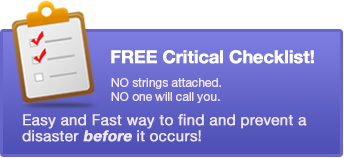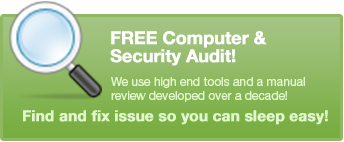Key Takeaways:
- Remote Desktop enables users to access their desktops and applications from anywhere in the world, increasing productivity and flexibility.
- However, it also poses security risks, and users must implement best practices to ensure their data and systems remain secure.
- Some best practices include using strong passwords, enabling multi-factor authentication, and limiting access to only necessary users.
- Additionally, users should regularly update their Remote Desktop software and monitor their systems for any suspicious activity.
Remote Desktop is a powerful tool that enables users to access their desktops and applications from anywhere in the world. Whether you're traveling, working from home, or simply on the go, it can provide the flexibility and productivity you need to get your work done.
However, Remote Desktop also poses significant security risks, as attackers can use it to gain access to your systems and data. Therefore, it's essential to implement best practices when to ensure your data and systems remain secure.
In this article, we'll provide an in-depth overview of Remote Desktop, including its benefits, risks, and best practices. We'll also answer some frequently asked questions and provide a table of software options.
Benefits:
- Increased Productivity: It enables users to access their desktops and applications from anywhere in the world, eliminating the need to physically be in the office. This increased flexibility can boost productivity by allowing users to work when and where they are most productive.
- Cost Savings: It can also save companies money by reducing the need for physical office space and infrastructure. Additionally, remote work can reduce travel expenses and improve work-life balance for employees.
- Flexibility: It provides users with the flexibility to work from anywhere with an internet connection. This can be especially beneficial for employees who need to work from home due to family or health reasons.
Risks:
- Security Risks: It can pose significant security risks if not implemented correctly. Attackers can use it to gain access to systems and data, potentially causing significant damage. Additionally, unsecured sessions can be intercepted, allowing attackers to steal sensitive data.
- Performance Issues: It can also suffer from performance issues, especially if the user's internet connection is slow or unreliable. This can lead to frustration and reduced productivity.
- Technical Issues: It can also experience technical issues, such as software glitches and compatibility problems. These issues can be time-consuming to resolve and can impact productivity.
Best Practices:
- Use Strong Passwords: Users should always use strong passwords, and avoid using common words or phrases. Passwords should be at least eight characters long and include a mix of uppercase and lowercase letters, numbers, and symbols.
- Enable Multi-Factor Authentication: Multi-factor authentication adds an extra layer of security by requiring users to provide additional verification, such as a code sent to their phone. This can help prevent unauthorized access to systems and data.
- Limit Access: Users should limit access to Remote Desktop to only those who need it, and implement role-based access controls to restrict access to sensitive data.
- Regularly Update Software: Users should regularly update their software to ensure they have the latest security patches and bug fixes. This can help prevent attackers from exploiting vulnerabilities in outdated software.
- Monitor Systems: Users should monitor their systems for any suspicious activity, such as failed login attempts or unauthorized access. Regularly reviewing logs and conducting security audits can help detect and mitigate any potential security breaches.
- Use VPN: Virtual Private Network (VPN) can add an extra layer of security by encrypting Remote Desktop traffic, making it difficult for attackers to intercept and steal sensitive information.
- Secure Endpoints: Users should also ensure that their endpoints, such as laptops or smartphones, are secure by using anti-virus software and implementing strong password policies.
FAQs:
What is Remote Desktop?
Remote Desktop is a technology that allows users to access their desktops and applications from a remote location using a network connection. This allows users to work from anywhere in the world, increasing flexibility and productivity.
How does Remote Desktop work?
Remote Desktop works by using a protocol to transmit data between the desktop and the local computer. This protocol can vary depending on the software being used.
What are the benefits of Remote Desktop?
The benefits include increased productivity, cost savings, and flexibility. Users can work from anywhere with an internet connection, reducing the need for physical office space and infrastructure.
What are the risks of Remote Desktop?
The risks of it include security risks, performance issues, and technical issues. If not implemented correctly, it can pose significant security risks, allowing attackers to gain access to systems and data.
How can I ensure my Remote Desktop sessions are secure?
Users can ensure their sessions are secure by using strong passwords, enabling multi-factor authentication, limiting access, regularly updating software, monitoring systems, and using VPN.
Remote Desktop Software Options:
Below is a table of some popular software options and their features:
| Software | Features |
| Microsoft Remote Desktop | Free for Windows, Mac, iOS, and Android; easy setup; multi-factor authentication |
| TeamViewer | Cross-platform support; easy to use; high security |
| Chrome Remote Desktop | Free; no additional software needed; easy to set up |
| AnyDesk | High speed; low latency; easy file transfer |
| Splashtop | Cross-platform support; high performance; high security |
| LogMeIn | Easy to use; multi-platform support; high security |
Remote Desktop is a powerful tool that can provide users with increased flexibility and productivity. However, it also poses significant security risks, and users must implement best practices to ensure their data and systems remain secure.
By following best practices such as using strong passwords, enabling multi-factor authentication, and regularly updating software, users can enjoy the benefits of Remote Desktop without compromising their security. Additionally, using VPN and securing endpoints can add an extra layer of security to sessions.
Overall, Remote Desktop can be a valuable tool for businesses and individuals, but it's essential to approach it with caution and implement best practices to ensure a secure and productive experience.



